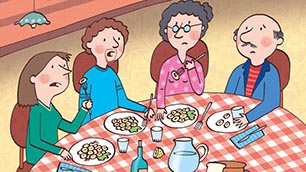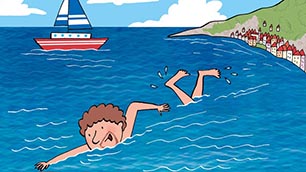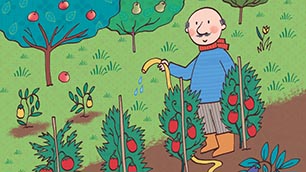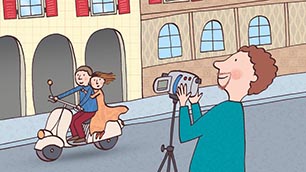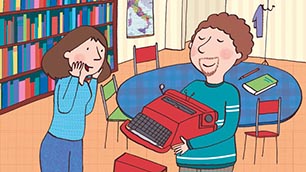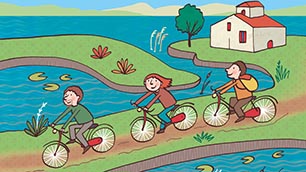Personal pronouns and the verb Essere - Part II
| Silvia: | Ciao Connor! |
| Connor: | Ciao? I’m not leaving… I just got here! |
| Silvia: | I know you’re not leaving Connor. I am sure that you did not forget that we have an important lesson today. We need to practice noi siamo, voi siete e loro sono! |
| Connor: | Sì. Then I don’t understand. I thought that you usually say ciao when you are leaving a place… |
| Silvia: | Ah, I see why you are a little confused, Connor. Well, in Italiano, ciao is a friendly and informal way to address people, which you can use both when you see someone and want to say hello to them and as a way of saying goodbye when you leave a place. |
| Connor: | Really? |
| Silvia: | Do you know anything about the history of the word ciao? |
| Connor: | No, I don’t think I do… |
| Silvia: | Ciao comes from the Venetian word s-ciào, schiavo in Italiano, slave in English. |
| Connor: | Slave? Really? |
| Silvia: | Well… once upon a time people would employ the expression s-ciào vostro, which means your slave or I am your slave as a form of greeting. |
| Connor: | Something like I’m at your service. |
| Silvia: | That’s right! Over time, this greeting lost its submissive connotations, becoming a general expression of goodwill. It eventually was compressed into the word “ciao” and spread outside Venice, all over Italy and abroad, all over the world. |
| Connor: | That’s fascinating, Silvia! I have been dreaming about Venice for a long time… |
| Silvia: | So, if I say noi siamo schiavi, what does it mean? |
| Connor: | We are slaves...? |
| Silvia: | Exactly, but let’s see some other words and practice some examples using noi, voi, loro… |
| Connor: | Noi siamo… Noi siamo Silvia and Connor. |
| Silvia: | Mamma Mia! I was just about to tell you something new and you read my mind. Well, to stay on the topic of noi siamo Silvia e Connor, let me tell you how you can convey this same concept in another way: noi ci chiamiamo Silvia e Connor. |
| Connor: | This is getting complicated… |
| Silvia: | It is not complicato, don't worry! Chiamarsi can be translated as my name is. Let me conjugate this verb for you: Io mi chiamo - my name is / I am called Tu ti chiami - your name is / you are called Lui/Lei si chiama - his/her name is / your name is (formal) / he/she/you are called Noi ci chiamiamo - our name(s) are / we are called Voi vi chiamate - your name(s) are (plural) / you are called Loro si chiamano - their name(s) are / they are called |
| Connor: | So, I can either say Io mi chiamo Connor or Io sono Connor. |
| Silvia: | Exactly, and remember that the Italian language often drops the personal pronoun. So, when you want to know somebody’s name, you can use “chiamarsi”. È semplice! For instance, I can ask you: Come ti chiami? Which can be translated in English as: What is your name? Now try to answer my question… |
| Connor: | Mi chiamo Connor! Come ti chiami? |
| Silvia: | Mi chiamo Silvia! Come si chiamano mamma e papà? |
| Connor: | I know that! Si chiamano Giovanna e Sean. |
| Silvia: | Molto bene! Very good! Sono molto felice with our first grammar lesson, Connor! |
| Connor: | So am I, Silvia! I can’t wait to learn more! |







